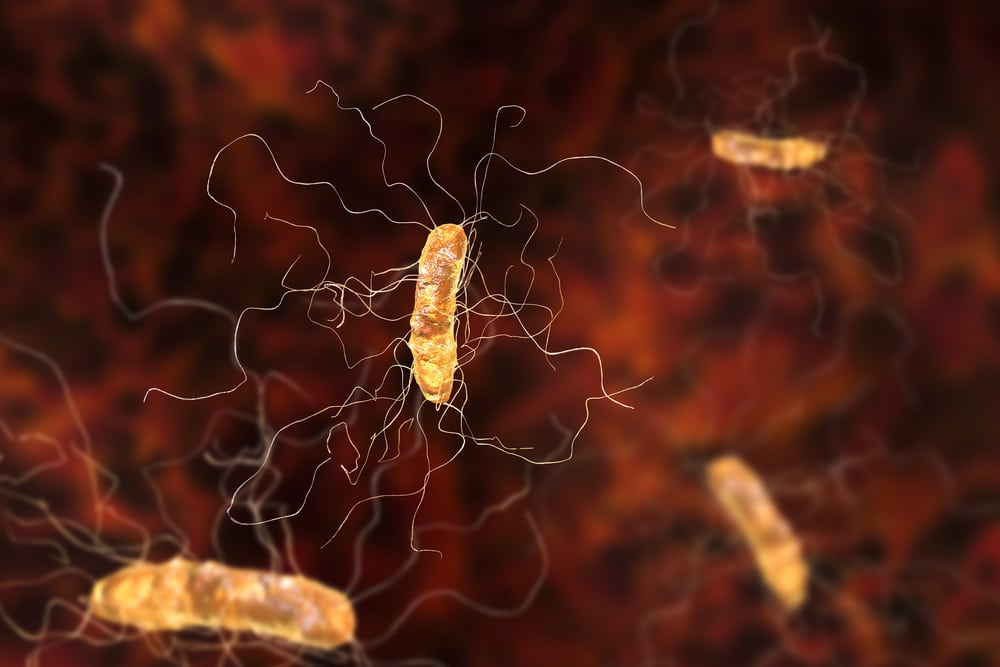A species of ordinary gut bacteria flourishes when the intestinal flora is knocked out by a course of antibiotics. Since the bacteria are naturally resistant to many antibiotics, this can cause problems.
A study at Lund University in Sweden now shows how two molecular mechanisms can work together to make the bacterium extra resistant.
“Using this knowledge, we hope to be able to design even better medicines,” says Vasili Hauryliuk, senior lecturer at Lund University, who led the study.
The threat from antibiotic resistant bacteria is as well-known as it is serious. Last year, The Lancet reported an estimated 1.27 million people died in 2019 as a result of bacterial infection that could not be treated with existing medicines. To tackle this, it is essential to understand the underpinning molecular mechanisms.
During antibiotic treatment, the normal intestinal flora is disturbed, which provides an opportunity for antibiotic resistant bacterial pathogens that are otherwise suppressed though competition with the “good” gut bacteria. One of the most problematic bacterial species is Clostridioides difficile, formerly known as Clostridium difficile or, more commonly, C. diff.
It is found in the intestines, is resistant to antibiotic treatments and can cause serious diarrheal infections. The bacteria’s ability to create spores means it is easily spread and therefore causes problems in healthcare settings, resulting both in increased mortality and extended treatment times.
“Instead of the antibiotic saving you, in this case it promotes a secondary bacterial infection,” Hauryliuk said.
Novel protein
“The risk of infection with C. diff is known to increase after treatment with an antibiotic called clindamycin, but the reason for this was unknown. Our research showed a novel protein conveys resistance to the class of antibiotics to which clindamycin belong,” says Obana Nozomu, assistant professor at the University of Tsukuba and one of the researchers behind the study.
The mechanism of C. diff resistance has been investigated by an international collaboration between researchers in Sweden, Japan, the U.K., U.S., Estonia and Germany, and the results of the study were published in Nucleic Acids Research.
The researchers identified a novel protein responsible for the resistance. The protein works on the ribosome – the molecular factory that produces the proteins in the bacteria. The ribosome is one of the primary antibiotic targets: if proteins cannot be synthesized, the bacteria will not grow, replicate and cause the infection.
“This newly discovered protein kicks the antibiotic molecule out of the ribosome. We also saw that it combines with another resistance factor. The second chemically modifies the ribosome so that the antibiotic molecules bind less tightly to it. The extra-potent resistance is the result of two mechanisms, two factors, which combine and, in so doing, give the bacteria its ‘superpowers’ against antibiotics,” said Gemma C. Atkinson, senior lecturer at Lund University and co-author of the article.
New treatment potential
The researchers used cryogenic electron microscopy to study the resistance mechanisms against antibiotics on a molecular level. This knowledge opens the way for new treatment strategies against resistance and the infections that the bacteria cause.
“A couple of years ago, Andrew G. Myers’ lab at Harvard University developed a new generation of ribosome-binding antibiotics, known as iboxamycin. It is a very potent medicine that knocks out ‘ordinary’ C. diff bacteria. The results of this study, however, show that C. diff strains that have both resistance factors are, unfortunately, resistant to this antibiotic as well. This means that it is necessary to design antibiotic molecules that bind even tighter in order to overpower this kind of resistance,” Hauryliuk said, adding that they would now be collaborating with Myers’ group on subsequent studies.
The research also found certain antibiotics that target the ribosome induce the production of the resistance factor. This may also provide clues for designing new antibiotic molecules, since resistance cannot be induced if resistance factors are not synthesized.
Partnering 2030: The Biotech Perspective 2023






